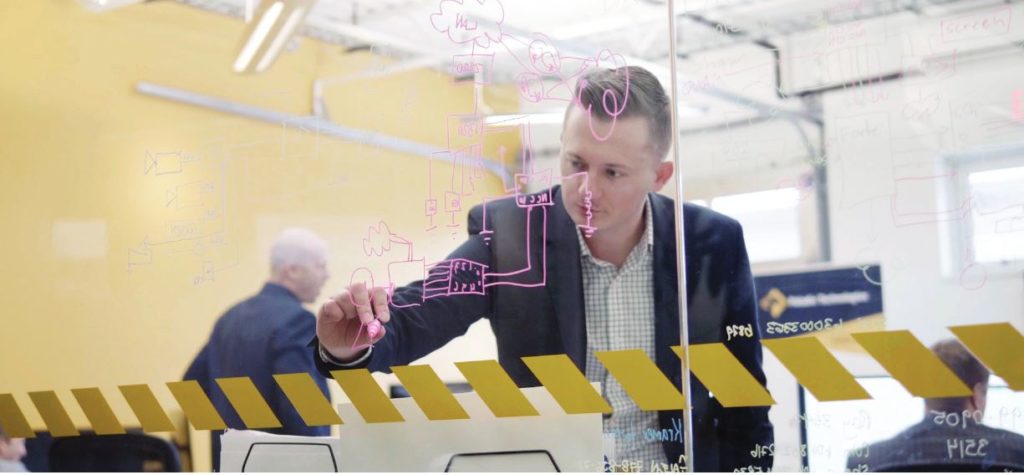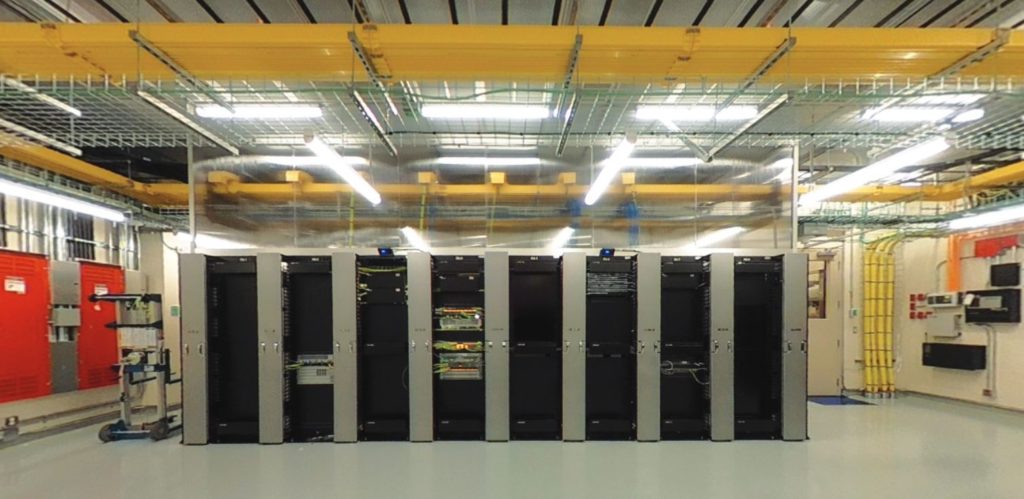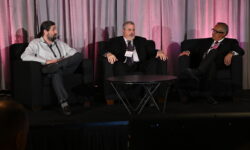How Paladin Became One of North America’s Largest Systems Integrators
Leaders from Paladin Technologies explain how the company is putting substance behind proven conventions for success such as strong culture, high technical IQ and exceeding expectations.

When referring to Paladin Technologies it’s not uncommon for people to sometimes shorten it to just Paladin. But for the security integrator’s fast-growing customer base and dedicated staff it may be more appropriate to take it a step further — to simply Pal.
Let’s face it, everyone can use a pal on their side who always has their back. And so who better to exemplify that than your security provider or employer? Add in a diverse array of offerings and deep expertise and it’s no wonder Paladin Technologies is emerging as one of North America’s largest complex systems integrators.

“We’ve evolved from Paladin Security Systems at the initiation, a complementary company to a guarding business, Paladin Security. The DNA of the Paladin Group of Companies is a huge customer service focus. Its DNA is passion about what we do, living up to our commitments and great teamwork,” says Iain Morton, executive vice president of Paladin Technologies. “Paladin Security Systems becoming Paladin Technologies was accelerated through thoughtful mergers where we brought in tremendous expertise, talented people and a clearer focus more on the integration business, away from conventional alarm service.”
In January, it was announced that Lee Technology of Austin, Texas (acquired in 2020) and San Diego-based TekWorks (2019) would do business as Paladin Technologies. Those moves left Vancouver, British Columbia-headquartered Paladin (see Fast Facts for more) with approximately 1,000 associates working out of 23 locations across Canada and the U.S.
Included in that is the firm’s electrical business, Action Electric. Currently, Paladin designs and installs technology solutions including integrated security, network infrastructure, A/V, fiber optics OSP, structured cabling, unified communications and more across vertical markets like energy generation & transmission, healthcare, government, institutional and banking. Its high-profile clientele includes Nokia, Monster Energy, DirectTV and Western Digital.
As the following conversation Paladin Technologies leadership engaged in with Security Sales & Integration indicates, the company is putting substance behind proven conventions for success such as strong culture, high technical IQ and exceeding expectations.
Joining in with Morton is Vice President Joe Morris, Director of Marketing Stephanie Whalen and Executive Vice President of Technology David Sime.
What is Paladin Technologies’ primary go-to value proposition to a prospective customer?
Iain Morton: It’s really that we provide good guidance to customers on what we can and cannot do. We have and will decline pursuits where we would be over the skis, so to speak. We will build up and learn from that until we are ready. The good thing about this industry in the place we play in is it’s not transactional, it’s recurring. What happened three years ago is going to happen again in terms of an opportunity to win a client’s business. They’ll turn to you when they’re looking for companies that will be what they say, follow through and finish the job, no matter if it’s going fabulous or if there’s issues. We’ll know what they’re doing, we’ll invest in the people to train them and support them.
That’s the value proposition we try to get across. It’s not through words on a page, it’s talking to our people and other clients, it’s referrals, and it’s references from manufacturers. They’re the ones who sometimes get the call back saying, “Your product has been the perfect solution but I can’t get good support” or “They didn’t integrate it well” or “It’s not working well on my network.” Those are the end users they influenced back over to us, perhaps as a service option in the future. That opens up doors and when you open those doors it’s very much a follower type of market. Sometimes in certain complex verticals when you’re successful with one client you can parlay that, and it will become subsequently spreadable.
Underpinning everything are our core values and a client-first focus. Our teams are focused on working together and communicating well internally. We don’t have internal competition like some companies. We work really collaboratively. We look at people development as our No. 1 tactic and strategy. On the technical side, we look at innovation carefully and don’t jump on something just because it’s the hot potato and being pitched out there.
We remain prudent in what we do. That’s allowed us to cautiously but assertively move quickly into an adjacency. It’s all flowing from being able to be an expert in one area, in one region or through one merger and then being able to expand it into the others. That’s really going to be a linchpin of our continuing growth and how we move into new markets.
Continuing with that, what is the outlook and strategy of organic versus acquisitive growth, what are the targets?
Morton: We’ve made some nice mergers and acquisitions the past few years that follow great due diligence. One is about the character of the company we’re partnering with, the character of the leadership, and the fit. That’s the most important thing. Next is if they add or are complementary, do they bring us into a new geography? Do they add a new skillset in a specific area where your technical expertise will gain? Is there a new vertical it opens? Acquisitions remain an important part of what we do but we look at them very carefully and where they add that greater value.
Organic growth is where we’re most proud of because, simultaneous to that M&A strategy, we’ve been growing as quickly or quicker beyond that. That’s the scorecard of how we’re doing as a team and how our marketing people are doing because that is the fun part of the business — growing. Organic growth allows all our team members to have greater opportunities and fuels the funds to make the next step forward.

A value-add that Paladin offers clients is access to a national design team.
How do Paladin Technologies’ deep and diverse capabilities play into its marketplace advantage?
Morton: When we have multiple irons in the fire we’re almost always going against a competitor with only one iron in that fire. So it provides us many more options to bring value to that customer. Simpler supply chain, simpler procurement chain, simpler project management delivery and reporting. It all leads to less costs and risks for the end-user client. It feels great to win more than one phase and most of our teams are very good at it. If you bring us in as an A/V expert, you’re then looking over at the security team or another technology team. Our customers know they can rely on our experts not to overcommit and to expect the same level of professionalism and expertise in all the areas we serve.
David Sime: Generally, with the technologies we’re deploying there’s some element of field devices that then have to be transported on a network. So there’s synergy there. Then the server and storage and software elements of that application are common as well. That allows us, say if we can get in with A/V and put a bunch of devices on the network and backhaul that and manage that traffic, then doing the surveillance or access controller or voice. It all just fits into that same mold.
Continuing with the competitive landscape, are there aspects of it that you are really concerned about?
Joe Morris: Yes, sure. There are competitors out there in different regions, markets and verticals. But we have really strong business units, from marketing to technology to sales to project management. That shows in the proposals we put forward, in the communication with the client and, if we are successful, the delivery on it. There’s lots of good competition out there.
Morton: We’re very respectful of competition and willing to learn and adapt. If we’re not beating them, then we have to do better, be better and earn the trust of the prospect to establish ourselves further. There’s always a route to being in a successful position. We’re prepared to be humble about when we lose a bid and we’ll come back stronger next time. We want to be that local, nimble, service-oriented company, very responsive to our commitments, yet with the horsepower of a national. It’s a delicate balance.
Sime: We’re also cautious about Big Tech and manufacturers going direct to the customer, that model of bypassing the integrator the way the IT space has gone the last decade or so. The manufacturers need to focus on producing good, secure products, enabling features in them and ensuring they’re cybersecure and capable, and driving down the cost. They shouldn’t be out there growing their sales footprint and they definitely shouldn’t be having an installation workforce. We see some startups trying to go past the integrator channel and direct market. You’ve got to be focused on your products first before you focus on going to market.

One of Paladin’s specialties is delivering design-build solutions, such as datacenters (pictured above) within public infrastructure.
Picking up on IT and cyber, how would you categorize Paladin’s expertise in network solutions? What’s in-house and what’s outsourced? What role does cybersecurity play?
Sime: We founded the business on the premise that IT infrastructure was going to enable us to deploy services out in the environments and that everything was going to be on a common IT backbone. Networking is a core component and security of that network is part of that core. We do all that design and implementation in-house. From a network server and storage perspective, we’ve invested heavily in our people to either bring them from enterprise IT environments, telecom environments and then develop them to ensure they’re on the leading edge of the technology.
From a security perspective, we’re designing it securely and vetting the supply chain, because that’s another vector of attack that has been pretty common in the big breaches recently. In many cases they’re dropping technologies in or packaging technologies in that inevitably leave the vector or breach factor open.
We look at it completely from all the different aspects. Then once it gets complex enough or we need third-party validation or we want to see ongoing monitoring, we have partners in the cybersecurity industry. All they do is secure systems, monitor for threats and remediate them.
If you enjoyed this article and want to receive more valuable industry content like this, click here to sign up for our FREE digital newsletters!

Security Is Our Business, Too
For professionals who recommend, buy and install all types of electronic security equipment, a free subscription to Commercial Integrator + Security Sales & Integration is like having a consultant on call. You’ll find an ideal balance of technology and business coverage, with installation tips and techniques for products and updates on how to add to your bottom line.
A FREE subscription to the top resource for security and integration industry will prove to be invaluable.














